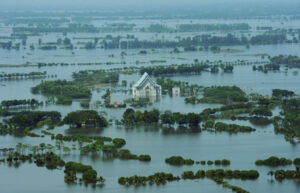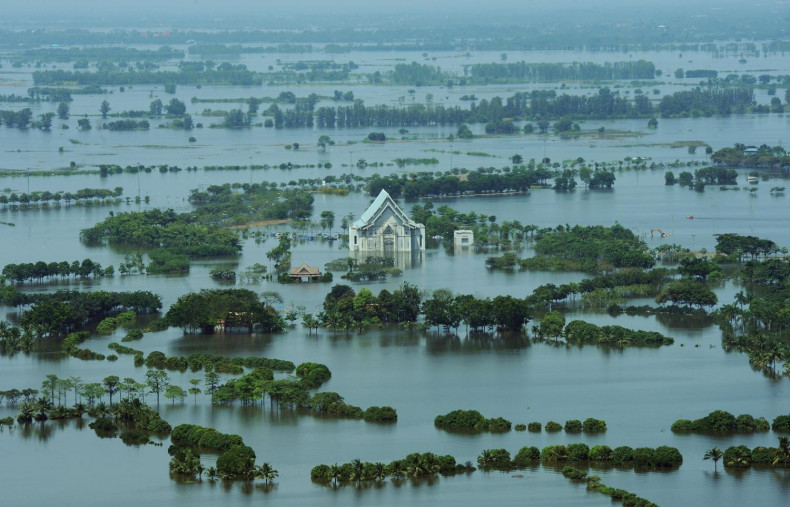
Thailand’s climate challenge solutions
Thailand’s economy is among the hardest hit by the harsh impacts of global warming. But there is still a way forward.
Rising temperatures and extreme weather are slashing our crop yields, flooding factories, and threatening key tourist destinations. Projections show Thailand could face a 19.5% GDP reduction by 2050 if the temperature rises by 2C.
The Swiss Re Institute, which studies potential economic loss due to climate change among 48 countries, ranks Thailand No.3 for the impact on agricultural yield and No.1 in both labour productivity and tourism vulnerability. A terrifying scenario, indeed.
As the Chinese saying goes, “Deep-rooted trees with green leaves move with wind,” resilience and adaptability are keys to survival and sustainability. Thailand urgently needs to adapt and increase her adaptive capacity to protect itself from global warming risk. Or perish.
Agriculture
Agriculture, Thailand’s economic backbone, faces severe climate threats. Sugarcane yields may drop by 14% by 2035, with rice and cassava production potentially falling 21.7% and 30% by the end of the century. These changes threaten farmers’ livelihoods and food security, demanding an urgent need for climate-smart agriculture.
There are different ways of adaptation, depending on the nature of the problem.
To protect yields and diversify risks, farmers must adopt mixed farming of pest-resistant and weather-resilient crops supported by effective land and water management. Studies show farmers growing multiple crops fare better during extreme weather, with stable incomes and fewer losses.
Adjusting planting calendars to match rainfall patterns and using accurate weather forecasts can significantly improve yields. The country’s challenge is to make weather forecasts more accurate.
Frequent droughts and rain delays make water efficiency essential. Drip irrigation is an effective choice. It conserves water, boosts yields, and reduces weeds, with sugarcane yields increasing by 2-3 tonnes per rai, and cassava by 0.8 tonnes.
To fight the heat, the cooling systems in chicken and vegetable nurseries help improve animal health, save water and raise yields, though they remain costly for small-scale farmers.
Amid extreme weather, developing resilient crops is a must. While Thailand has begun breeding flood- and drought-resistant rice varieties, there is no research on heat-tolerant breeding varieties.
To remain competitive in the rice markets, the government should revise regulations that limit new plant variety development, eg, regulations on imported germplasm for research, and invest in research to develop resilient crop varieties. For example, allocating at least 1% of Thailand’s total rice value added towards competitive rice breeding programmes could lead to breakthroughs in heat-resistant strains.
Crop insurance is another tool to shield farmers from financial risks from climate change. Policies covering natural disasters and pestilence, as well as investment in geo-informatics technology for accurate assessment of risks of crop loss and damage, can help farmers reduce the risks of economic loss.
To restore the ecosystems, agroforestry should be promoted to replace monoculture plantations, particularly in mountainous regions. This forest-like farming helps reverse ecosystem degradation from monoculture farming, nourishes soil, improves biodiversity, and protects crops from temperature fluctuations.
To strengthen farmers’ resilience, Thailand should help small farmers diversify income sources outside of farming. They also need professional training to use science and farm innovations, as well as to collaborate with businesses to expand their markets.
Additionally, government policies should encourage young people to enter agriculture by raising farm incomes and promoting farm technology that appeals to the next generation of farmers.
Apart from supporting smart-farming innovations and resilient crop varieties, universities should receive incentives to create affordable, high-temperature-resistant farming technologies. Agricultural policies also need updates to improve coordination among farmers, businesses, universities, and government.
Additionally, the government should improve water-saving methods, build small water sources, enhance weather forecasting, and support crop insurance.
Small-scale farmers, heavily affected by climate change, need quick disaster compensation and training in non-farming skills to boost resilience. Finally, job creation in all provinces is essential to reduce migration to Bangkok.
Industry
The industrial sector, which contributes approximately 35% of Thailand’s GDP, is highly vulnerable to climate risks. In 2011, severe floods cost the economy 1.4 trillion baht, with 70% of the impact concentrated in manufacturing. Major industrial zones in Ayutthaya and Pathum Thani are especially prone to flooding, while the Eastern Economic Corridor (EEC) faces rising risks from water scarcity.
By 2037, the EEC’s industrial expansion is expected to grow by 64% from 2017, increasing water demand by 28%. This demand is predicted to outstrip available water resources, posing severe risks to production continuity and conflicts with local communities reliant on these water sources.
The outlook is worrying. Climate projections indicate that industrial zones in central Thailand are at risk of experiencing more frequent and severe flooding, while the EEC area is likely to encounter more frequent droughts.
Without action, the high concentration of factories in the Central and EEC areas could expose Thailand to serious economic losses and harm its reputation.
While industrial estates have constructed flood barriers to mitigate flooding risks, these measures do not fully ensure protection from disruptions. In fact, they exemplify climate maladaptation, as they often divert floodwaters towards nearby communities, exacerbating the impact on surrounding areas. In the EEC, new water sources and pipelines are being built, but drought conditions could still lead to water shortages, raising the risk of conflicts over water access with local communities.
Importantly, climate must be upheld to protect the powerless.
Using water-efficient methods is a better long-term solution. For example, Amata Industrial Estate recycles wastewater, reducing raw water use by 40% and saving 79 million baht a year. Thai Union has a similar approach, cutting water demand by 43% and saving 28 million baht annually.
Here are the TDRI’s recommendations for a sustainable industrial future:
Relocate factories from flood-prone areas. Use zoning laws to prevent new factories in high-risk zones. Importantly, decentralise industrial development. New industrial sites in flood-safe areas should have infrastructure to support low-carbon industries, providing a sustainable growth path for Thailand’s economy.
Water pricing reform is critical, as pricing can encourage conservation and investment in water recycling technology. Reducing the EEC’s water monopoly is also essential to ensure fair pricing for all stakeholders and fewer conflicts.
Tourism
Rising temperatures are driving travellers to cooler destinations, potentially costing Thailand up to 60 billion baht annually by 2050. Warmer winters may also reduce Chiang Mai’s appeal, threatening the income generated during the peak winter season. Rising sea levels and warmer waters also threaten beaches and coral reefs, with over half already damaged in 11 coastal provinces. A 2C temperature rise could destroy 99% of the world’s reefs.
To adapt to a hotter Thailand, attractions could extend evening hours, and temples like the Grand Palace could reopen at night. Indoor activities and creative tourism, such as illuminated Ayutthaya at night, can boost appeal. Expanding off-season and business tourism could help stabilise tourism income.
Government support with investments, research on the local creative economy, and targeted promotion is critical in helping the tourism sector adjust to these climate challenges.
Political commitment
Water shortages affect all sectors, so the government must take strong action to manage water effectively. This includes water pricing reform and cross-sector agreements among water user groups to prevent conflicts. Investing in water recycling and small local water sources can help ensure enough supply. Accurate weather forecasts, warning systems, and natural disaster insurance plans are also important. Moving factories away from flood-prone areas must be a priority.
Successful climate adaptation depends on cooperation between farmers, businesses, academia, and international organisations. Removing legal barriers, such as restrictions on importing seeds for heat-tolerant crops, will also help Thailand cope with climate challenges.
Global warming is not a future problem — it is happening now. By acting today, Thailand can protect its industries, reduce climate damage, and create a stronger future.
Nipon Poapongsakorn, Ph.D, is a Distinguished Scholar. Nopparuj Chindasombatcharoen, Ph.D, is a Research Fellow at the TDRI.
Source: https://www.bangkokpost.com/opinion/opinion/2959338/thailands-climate-challenge-solutions


